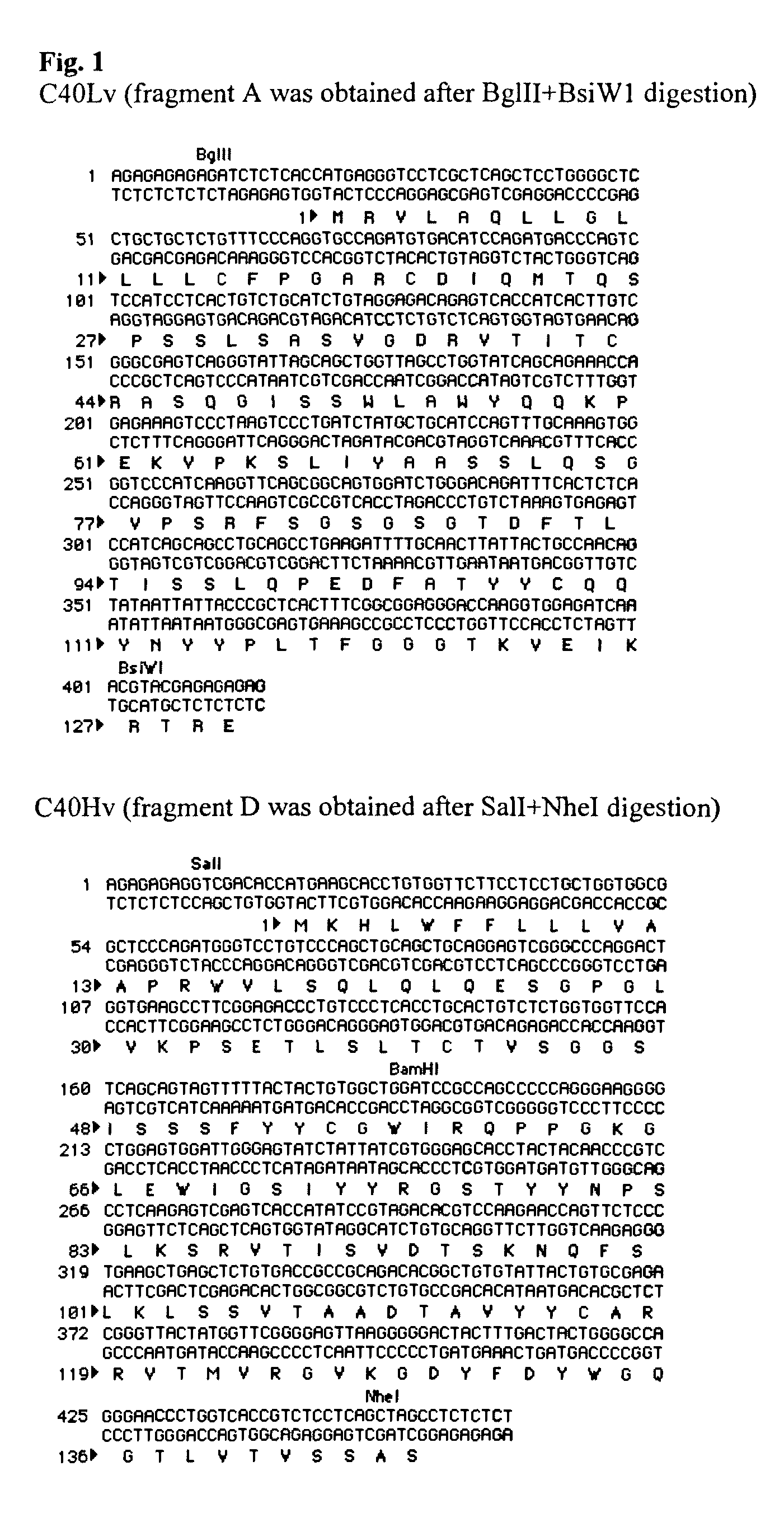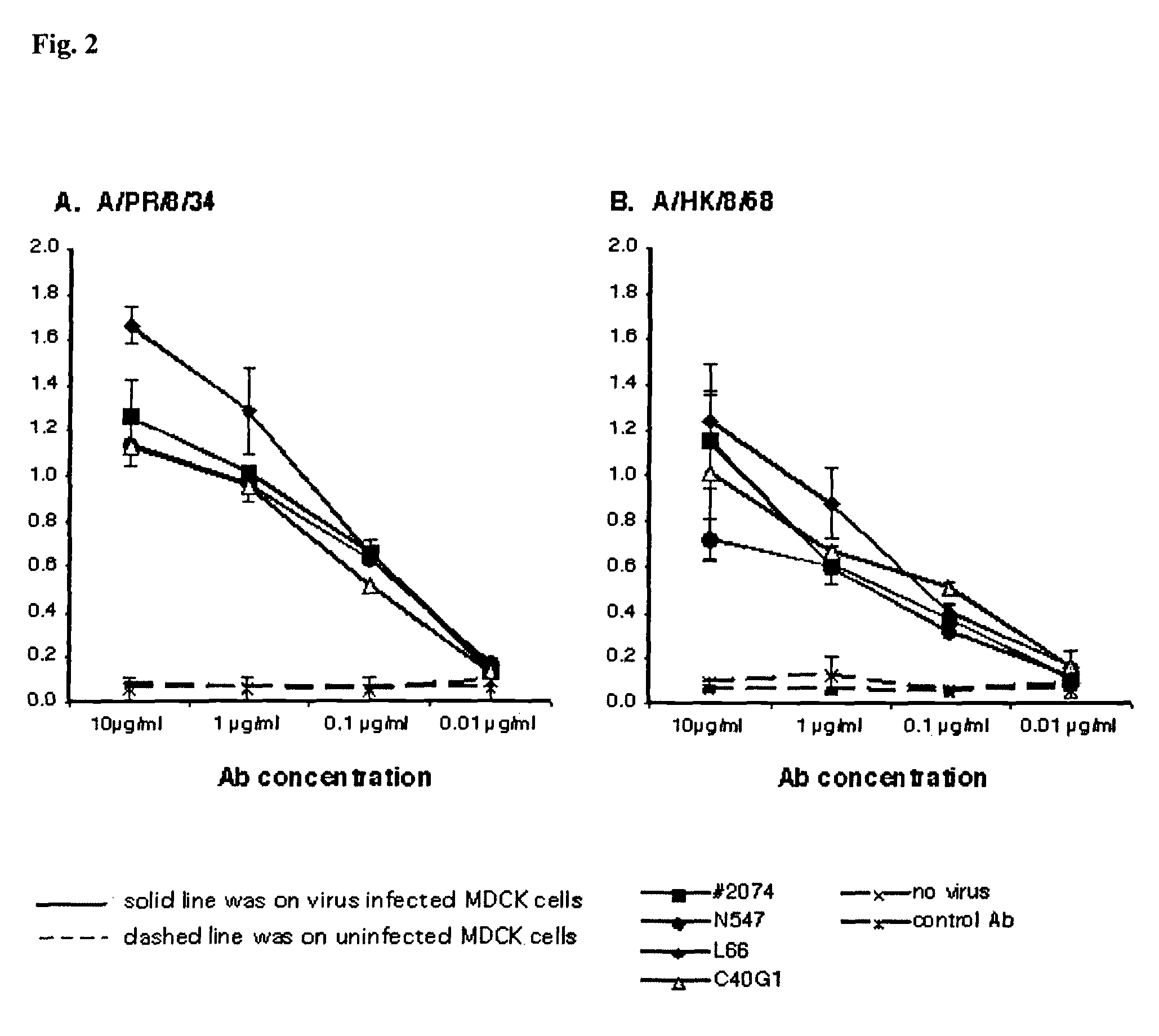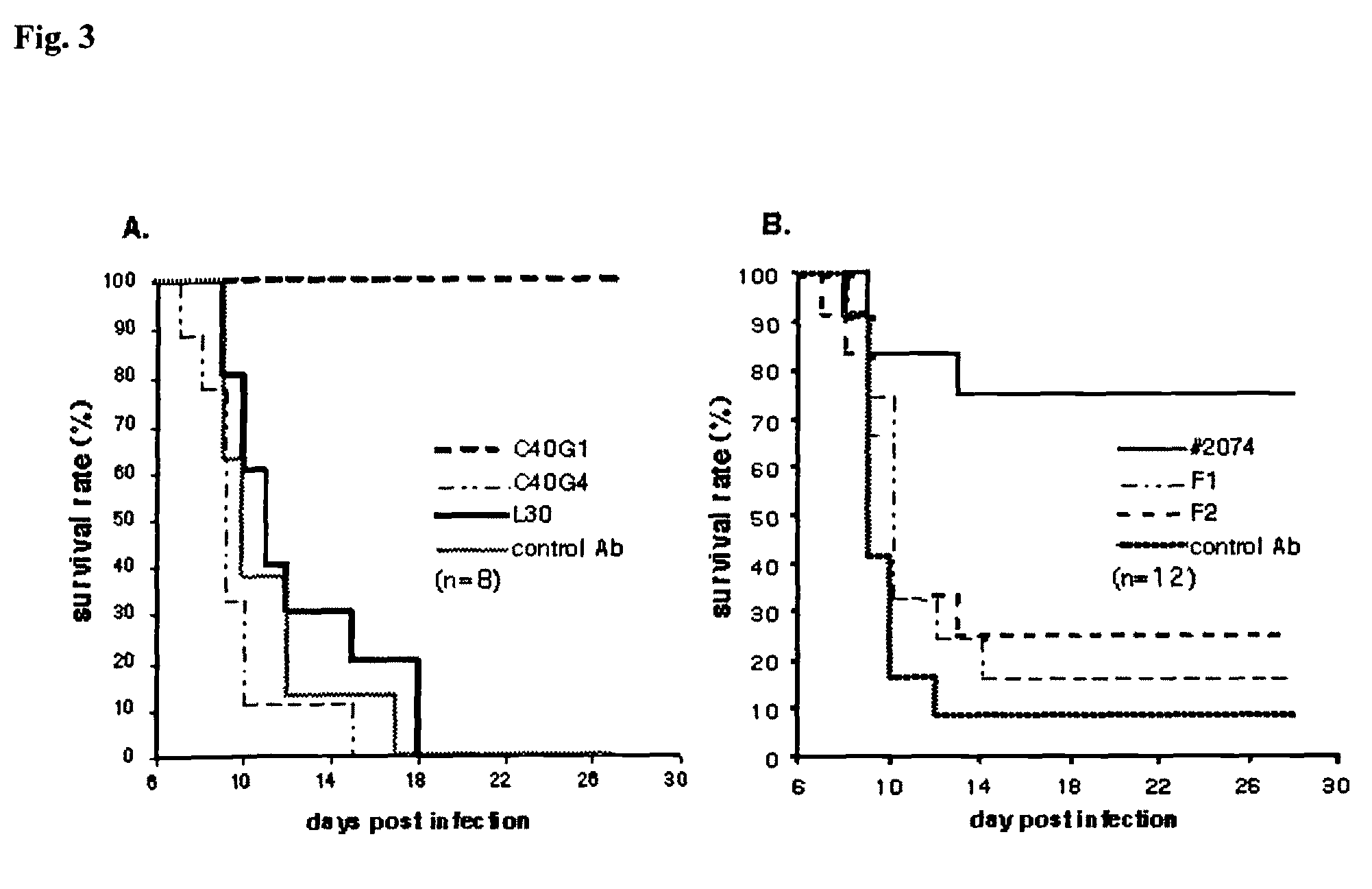Human monoclonal antibodies to influenza M2 protein and methods of making and using same
a technology of monoclonal antibodies and influenza m2, which is applied in the field of human monoclonal antibodies to influenza m2 protein and methods of making and using same, can solve the problems of not being able to achieve optimal targets, often failing to provide optimal protective immunity against divergent viral strains, and often not being able to provide effective protection from vaccination. , to achieve the effect of broad reactivity
- Summary
- Abstract
- Description
- Claims
- Application Information
AI Technical Summary
Benefits of technology
Problems solved by technology
Method used
Image
Examples
example 1
[0175]This example describes various materials and methods.
[0176]Peptide synthesis and peptide-KLH conjugates: M2 peptides were synthesized by Multiple Peptide Systems (San Diego, Calif.). Peptide purity was >95% after HPLC. The M2 peptide was then conjugated to KLH (M2-KLH) and BSA (M2-BSA) by the same company. The sequence of the extracellular 23-amino-acid M2 peptide is: SLLTEVETPIRNEWGCRCNDSSD (SEQ ID NO:1).
[0177]Mice: Human trans-chromosomic mice (WO 02 / 43478, WO 02 / 092812, Ishida and Lonberg, IBC's 11th Antibody Engineering Meeting. Abstract (2000); and Kataoka, S. IBC's 13th Antibody Engineering Meeting. Abstract (2002)) harboring human chromosome fragments containing the human immunoglobulin region were obtained from Kirin Brewery Co., Ltd. (Japan). C57BL / 6J mice were purchased from Jackson Laboratories at Bar Harbor, Me. and were housed in the animal facility at the La Jolla Institute for Allergy and Immunology.
[0178]Immunization: M2-KLH or M2-BSA in PBS (GIBCO BRL, Rockvil...
example 2
[0204]This example describes production and characterization of human and chimeric M2 monoclonal antibodies.
[0205]KM mice or HAC mice were immunized with synthetic M2 peptide based on the sequence derived from the M2 extracellular domain conjugated to KLH or BSA as a carrier. Most of the mice responded to M2 antigen with high titer as detected by ELISA with M2 peptide as coating antigen. Several anti-M2 human monoclonal antibodies were generated by fusion of splenocytes from 6 high responders with myeloma cells. Twelve monoclonal antibodies were obtained (denoted nos. 2074, C40, L17, L30, L40, L66, N547, S212, S80, S900, F1, and F2), that reacted to M2 peptide and / or M2-BSA conjugates, but did not respond to BSA, KLH (carriers for immunization), mGAD (a synthetic irrelevant peptide derived from mouse Glutamic Acid Decarboxylase (GAD), amino acids 246 to 266) as shown in Table 2. The coding sequences of variable regions of immunoglobulin heavy and light chains were cloned from the or...
example 3
[0225]This example describes the identification of minimal binding sequences of several exemplary invention M2 monoclonal antibodies.
[0226]Minimal binding sequences of antibodies were mapped using various peptides having truncations of the M2 N-terminus and C-terminus (Table 8 and 9). The epitope of each antibody is within the minimal binding sequence.
[0227]N547 binds well to the M2 peptide with one amino acid deleted from the N-terminus (M16, SEQ ID NO:56), but did not bind to M2 peptide with two amino acids deleted (M15, SEQ ID NO:57). N547 binds well to M2 peptide with seven amino acids deleted from C-terminus (NM16, SEQ ID NO:23), but did not bind to M2 peptide with eight amino acids deleted (NM15, SEQ ID NO:66). This data indicates that the antigenic determinant (i.e. epitope) of N547 is within an amino acid sequence, LLTEVETPIRNEWGC (SEQ ID NO:25).
[0228]L66 did not tolerate any amino acid deletions from N-terminus, but binds well to M2 peptides with up to seven amino acids del...
PUM
| Property | Measurement | Unit |
|---|---|---|
| concentration | aaaaa | aaaaa |
| concentration | aaaaa | aaaaa |
| temperature | aaaaa | aaaaa |
Abstract
Description
Claims
Application Information
 Login to View More
Login to View More - R&D
- Intellectual Property
- Life Sciences
- Materials
- Tech Scout
- Unparalleled Data Quality
- Higher Quality Content
- 60% Fewer Hallucinations
Browse by: Latest US Patents, China's latest patents, Technical Efficacy Thesaurus, Application Domain, Technology Topic, Popular Technical Reports.
© 2025 PatSnap. All rights reserved.Legal|Privacy policy|Modern Slavery Act Transparency Statement|Sitemap|About US| Contact US: help@patsnap.com



